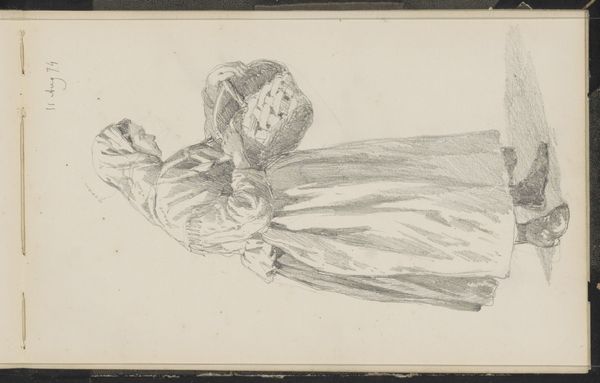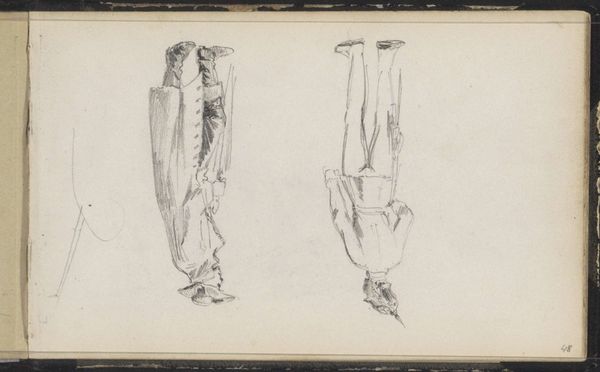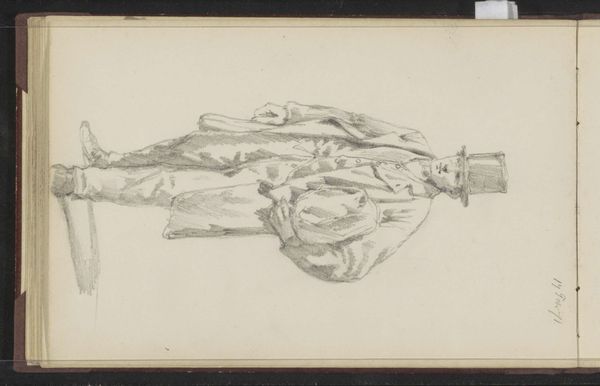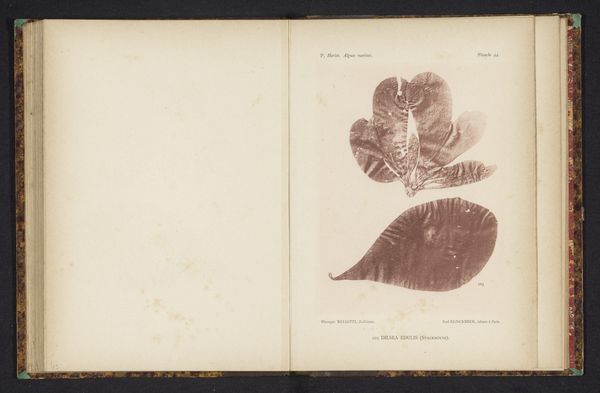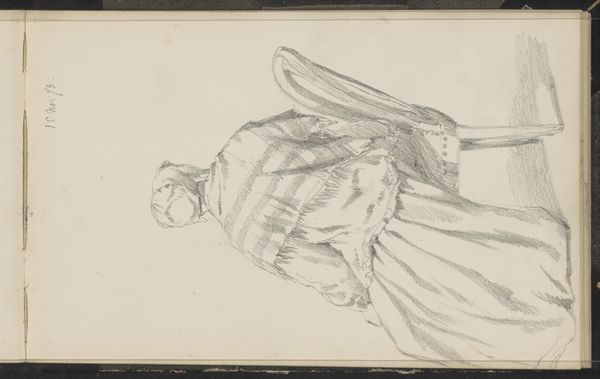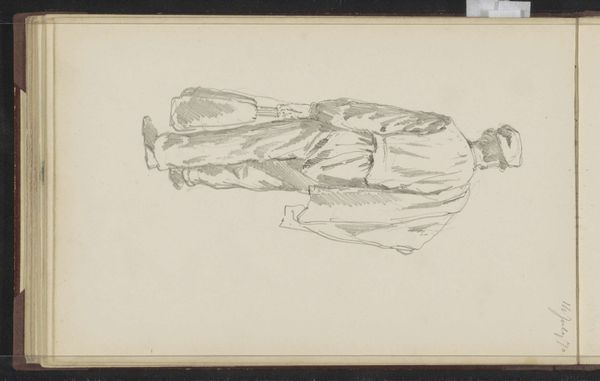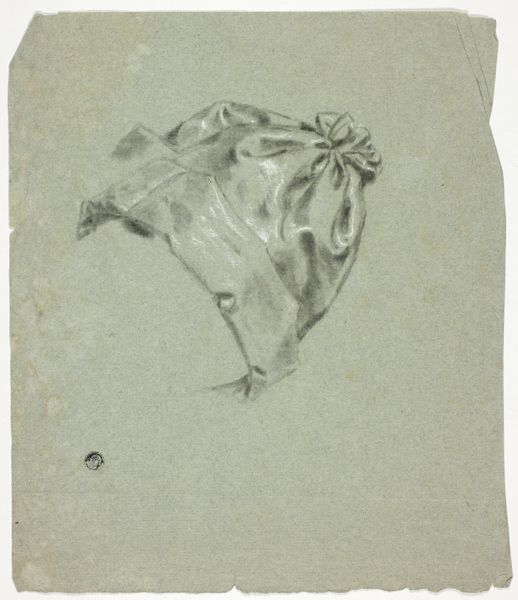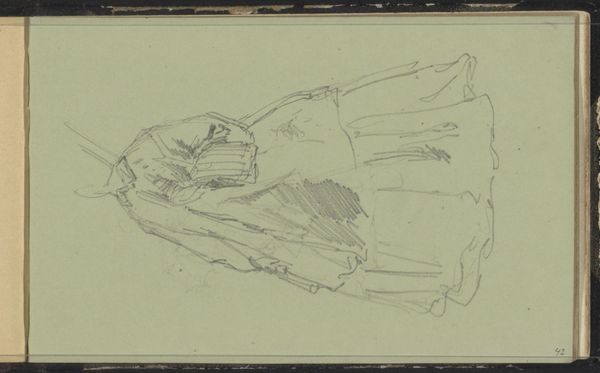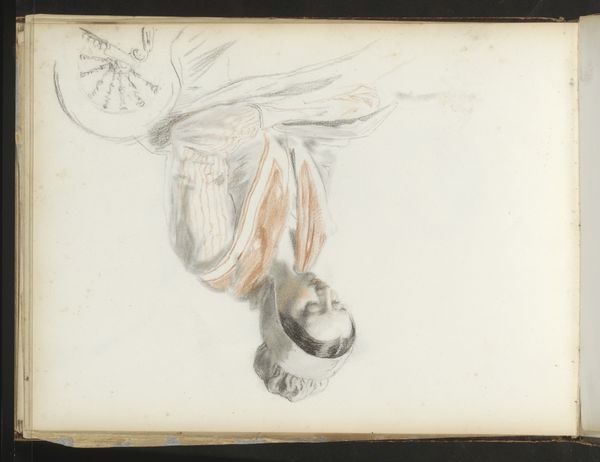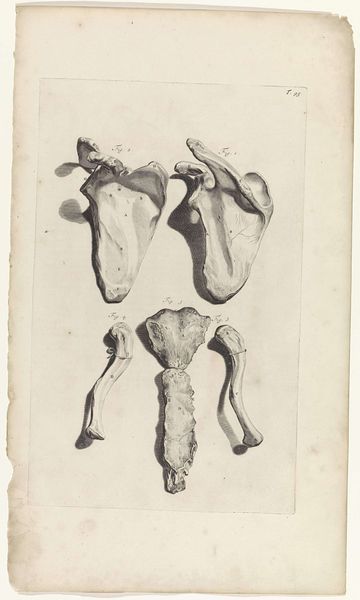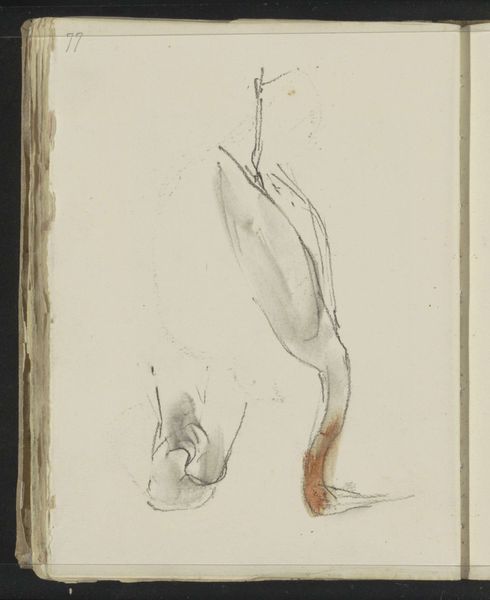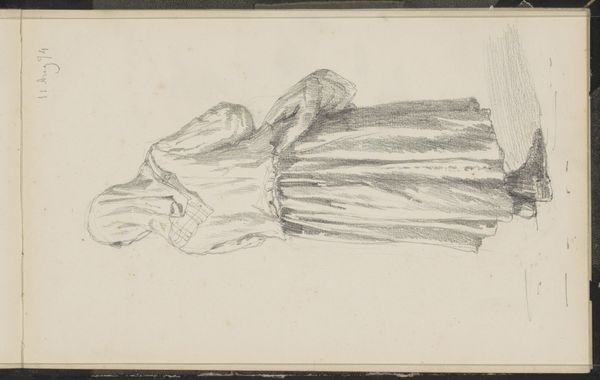
drawing, watercolor
#
portrait
#
drawing
#
figuration
#
watercolor
#
coloured pencil
#
genre-painting
#
profile
Copyright: Rijks Museum: Open Domain
Editor: This watercolor and coloured pencil drawing, “Man in zeventiende-eeuwse kleding,” created by Cornelis Springer sometime between 1846 and 1882, offers a profile view of a figure in historical garb. It's so economical, like a sketch, and something about his jaunty posture suggests pride or confidence. What strikes you about it? Curator: The very deliberate invocation of the 17th century in the man’s clothing speaks volumes, doesn't it? Consider the artist's era: mid-19th century, a time of burgeoning nationalism and romanticism. This figure, drawn with such deliberate archaism, is more than just a portrait; it’s a carefully constructed symbol. Editor: A symbol of what exactly? Is it like historical reenactment or some political statement? Curator: Perhaps both! The choice of clothing becomes a signifier, evoking a 'golden age,' loaded with notions of Dutch identity and power. Springer likely chose this imagery deliberately, appealing to the cultural memory and associating his work with the perceived virtues of a bygone era. Do you see any other symbolic cues in this composition? Editor: His sword! It's subtle but definitely there. That hints at nobility or military prowess. Curator: Precisely. And notice how the light catches it...These choices tell us something of Springer's desires: to connect with and perhaps even idealize a past he wishes to keep alive. It reflects nostalgia. Editor: I hadn't considered the historical context so deeply. It’s amazing how a simple sketch can reveal so much about cultural identity and yearning. Curator: Indeed. Every line, every color choice carries meaning when we examine it through the lens of cultural memory. Editor: I will definitely look closer from now on. Thank you.
Comments
No comments
Be the first to comment and join the conversation on the ultimate creative platform.
